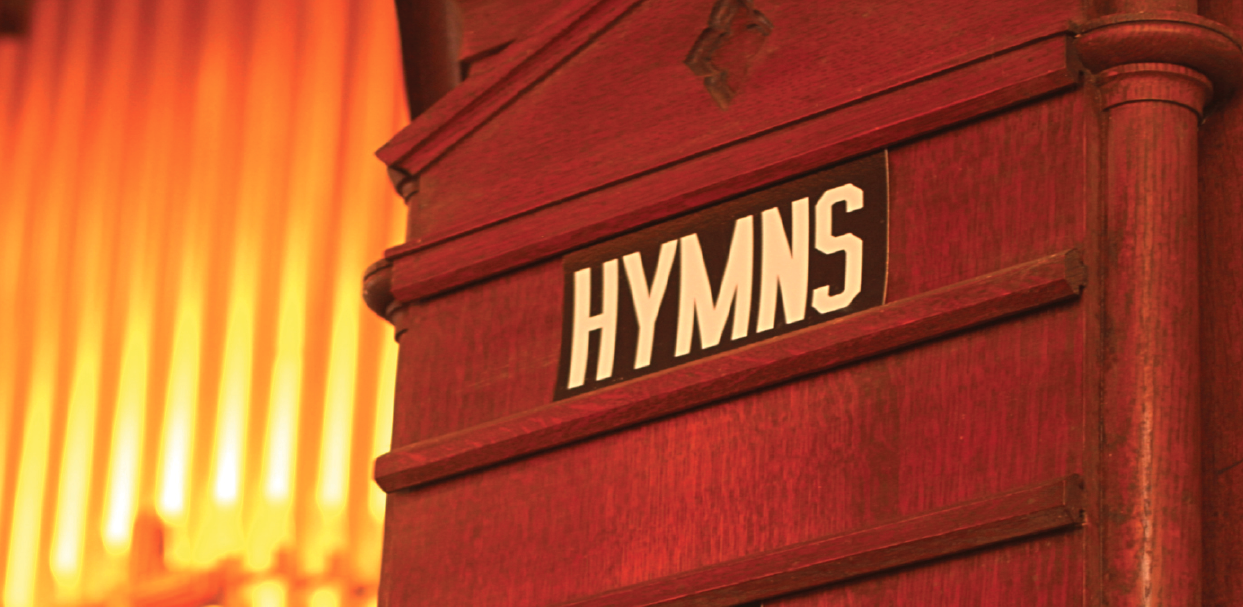By Eunice Porter
The sunbeams shine through stained glass windows, the organ swells the introduction, and it seems Heaven opens when the congregation bursts forth with “Praise to the Lord, the Almighty . . .”
How did hymns come into being for corporate worship? One only has to read the Old Testament to hear of singing praises, often with accompaniment of flute, lyre, cymbals, or horns. Both New Testament Gospels of Matthew and Mark relate that Jesus and his disciples sang a hymn before departing for Gethsemane. Biblical references reinforce the belief that music is vital to worship.
Congregational Singing Returns
Not very much is known before AD 1050 with regard to hymnody. The years between 1050 and the 1600s, however, saw the progression from chanting done by priests to the return of congregational singing in churches, which largely occurred during the Protestant Reformation. Martin Luther himself wrote several hymns, the most famous being “A Mighty Fortress.” It was thought the time signature of three beats per measure was ideal for church singing because it reflected on the Trinity. During this time frame the organ gained prominence as a means of accompanying singing.
Carols, Organs, and Oratorio
Emerging in popularity from England around the late 1500s to early 1600s was folk music called carols. Though carols were first written and performed decades earlier in secular settings, during this time period religious carols rose to prominence. Think “God Rest You Merry, Gentlemen” as an example.
While many cathedrals in Europe were using the pipe organ to supplement congregational singing, in juxtaposition, organs in Switzerland were being dismantled so that parishioners could concentrate solely on the preaching of the gospel. (One theory has it that organs were the work of the devil.)
Around 1600 a sacred opera, or oratorio, gained popularity. These works had no costumes or staging, but they had a narrator and placed emphasis on sacred text. They were done in prayer chapels or theaters but rarely in churches. The most famous is Handel’s Messiah, as powerful today as it was those many years ago.
England’s greatest seventeenth-century composer was Henry Purcell, a man who had an extraordinary ability to set the English language to music. Purcell’s music consists mainly of anthems, often taken from biblical psalms.
Three Outstanding Writers
Three outstanding hymn writers dominate the years of 1700-1800—Charles Wesley, John Newton, and Isaac Watts. Charles Wesley is credited with writing more than 6,000, filling many pages of hymnals in use today. John Newton’s turnaround from slave trader to following Christ prompted his beloved “Amazing Grace.” Isaac Watts at age 16 complained to his father that psalms were hard to sing. His father challenged him to do something about it; Isaac began immediately his quest to write hymns more compatible with congregational voices. He subsequently became known as “the father of English hymnody.”
New Song Formats
A hymn as defined in musical terms does not include a chorus; one that does is considered a gospel song. The gospel song gained popularity during the nineteenth century with such greats as Fanny Crosby (sources vary as to how many thousand she wrote), William Bradbury (“He Leadeth Me”) and Phoebe Knapp (“Blessed Assurance”).
Perhaps the most popular hymn to come out of the twentieth century is “How Great Thou Art.” Also during this century a new format emerged in many churches—contemporary church songs, led by a praise team and varied instruments.
The next time you’re singing a hymn, glance at the source and date. Many hymns, though centuries old, are “alive and well” today, their message as relevant now as the day they were put down on paper. Good hymns last for all time; they never grow old.
Eunice Porter is a retired state worker who lives in Keizer, Oregon.



Comments: no replies